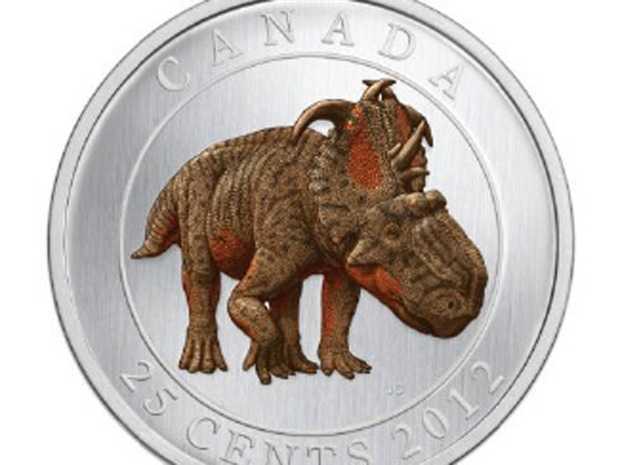Overly Sarcastic Productions
Published 5 Dec 2015Third video in a week? Good lord, what have they been feeding us?
Anyway, Blue’s back, this time with more history! The exciting conclusion to the three-part video series! Our “Return Of The King”! Our “Return Of The Jedi”! Our… wow, a lot of “part three”s are the return of something or other, aren’t they? Let’s pretend this is “The Return Of Bruce”.
April 27, 2020
Prehistory Summarized: Evolution
August 29, 2012
Does your Paleontology department need a visit from the “Pizazz!!!” marketing consultants?
Lore Sjöberg likes dinosaurs, and thinks paleontologists have an awesome job … but that too many of them are phoning it in in the “naming newly identified dinosaurs” department:
In zoology, whoever discovers a new species gets to name it. Normally this isn’t a big deal; at this point, the only living animal species being discovered are either some isolated sea slug or some type of antelope that everyone thought was the same as another type of antelope, but it turns out they can’t interbreed so — two different antelopes. In the latter case, everyone’s just going to keep calling it “an antelope” and in the former case, who cares?
However, there is one situation where animals are being given names that people are actually going to use, and that’s dinosaurs. Paleontologists have an awesome responsibility, as well as an awesome job. Whatever they name their long-extinct terrible lizards, that’s the name, and there’s a decent chance it’s going to show up on film or as a stuffed animal in a museum gift shop.
Some dinosaur names are ideal. Tyrannosaurus rex, for instance, is objectively the best name that anything has ever had, with Wolf Blitzer coming in a distant second. And there’s the Triceratops, which sounds cool and means “three-horned face,” and also Pentaceratops, which is, OK, kind of derivative, but I’m still hoping they eventually discover a Hexaceratops.
Sadly, however, not all scientists are equally inspired. Here are a few dinosaurs that, international rules for nomenclature be damned, need new names.
Like most kids, I was fascinated by dinosaurs and one of the (few) highlight of the public school year was the (usually) annual trip to the Royal Ontario Museum in Toronto with their dinosaur displays. Yet every time I happen to see dinosaurs mentioned in the popular press these days, it’s almost always some killjoy paleontologist trying to strike one of those cool dinosaur names by “reclassifying” to either an unreadable/unpronounceable Latin tag or a name that’s so heart-stoppingly boring that it might as well be a serial number.
Unless it’s some deep-seated conspiracy to make paleontology as uncool as accountancy or technical writing, I can’t understand why so many scientists seem to want to kill the natural joy so many of us found when we first learned about their topic of study.
Update: Brian Switek responds to Sjöberg’s complaints in the Smithsonian’s Dinosaur Tracking blog.
Now, there are some dinosaur names that I’m not totally enamored with. While I understand the dinosaur’s symbolic status, Bicentenaria argentina doesn’t exactly roll off the tongue, and the same goes for the unevocative Panamericansaurus (yes, named after Pan American Energy). Then there are the names that appeal to the more puerile portion of my sense of humor. Read the name Texasetes too fast and you may get the dinosaur confused with a part of the male anatomy (not to mention the actual debate over whether the name of Megalosaurus should really be “Scrotum“), and you should always be careful with the pronunciation of Fukuiraptor unless you’re actually trying to insult the allosaur.
But what baffles me is that Sjöberg didn’t pick any of these names. Instead, his list includes the likes of Spinosaurus and Giraffatitan. I get his beef with dinosaurs named after places (Albertosaurus, Edmontosaurus, etc.), and I agree that Gasosaurus was comically unimaginative, but Iguanodon? The second dinosaur ever named, and one of the most iconic prehistoric creatures named for the clue in its teeth that led Gideon Mantell to rightly hypothesize that the dinosaur was an immense herbivore? I have to wonder whether Sjöberg would consider “Iguanasaurus – the original proposed name for the dinosaur – to be a step back or an improvement.
I just don’t get Sjöberg’s contention that Giraffatitan is “terrible” because – *gasp* – the sauropod wasn’t actually a big giraffe. Strict literalism only in naming dinosaurs, please. And, really, what would Sjöberg suggest as a replacement for Spinosaurus? When Ernst Stromer found the theropod, the most distinctive thing about the dinosaur was its enormous vertebral spines. What would you call it? Suchomimus – a cousin of Spinosaurus – is a little more poetic, but I like Stromer’s choice just fine.
April 9, 2012
The Royal Canadian Mint: now they’re just poking fun at US espionage agencies
Remember the last time that a Canadian coin was the subject of an espionage warning from the US Department of Defence because the poppy appeared to be “filled with something man-made that looked like nano-technology”? The Royal Canadian Mint may get a radiation warning for their newest coin:

The image of a dinosaur whose remains were discovered in Alberta’s Peace Country will be featured on our newest quarter — the first Canadian coin with a glow-in-the dark picture.
The quarter, being released by the Royal Canadian Mint April 16, features Pachyrhinosaurus lakustai, a large herbivore whose bone fragments were discovered by Grande Prairie, Alta., science teacher Al Lakusta in 1974.
He plans to pick up one of the new coins for his 10-year-old grandson.
“I think almost anybody who reads about it thinks, ‘We can’t wait to try this,’ ” he said Sunday from his Grande Prairie home.
February 14, 2011
Pondering dinosaur sex on Valentine’s Day
No, really:
I have been sitting here with two Stegosaurus models for 20 minutes now, and I just can’t figure it out. How did these dinosaurs — bristling with spikes and plates — go about making more dinosaurs without skewering each other?
Stegosaurus has become an icon of the mystery surrounding dinosaur sex. Dinosaurs must have mated, but just how they did so has puzzled paleontologists for more than 100 years. Lacking much hard evidence, scientists have come up with all kinds of speculations: In his 1906 paper describing Tyrannosaurus rex, for instance, paleontologist Henry Fairfield Osborn proposed that male tyrant dinosaurs used their minuscule arms for “grasping during copulation.” Others forwarded similar notions about the function of the thumb-spikes on Iguanodon hands. These ideas eventually fell out of favor — perhaps due to embarrassment as much as anything else — but the question remained. How can we study the sex lives of animals that have been dead for millions upon millions of years?
H/T to Maggie Koerth-Baker, who writes: “You’ve really got to read this entire article. Out loud. To someone you love. If they’re the kind of lover who wants to know about prehistoric mating rituals, the dino-sex theories of Victorian paleontologists, or how to sex a fossil, they’ll thank you. (And if they aren’t that kind of lover, well. Maybe it’s time to re-think the relationship.)”
December 8, 2009
How to get rid of pesky dinosaurs
According to recent theorizing, you don’t incinerate ’em, you broil ’em:
The asteroid impact that ended the age of dinosaurs 65 million years ago didn’t incinerate life on our planet’s surface — it just broiled it, a new study suggests. The work resolves nagging questions about a theory that the impact triggered deadly wildfires around the world, but it also raises new questions about just what led to the mass extinction at the end of the Cretaceous period.
The impact of a 10-kilometre asteroid is blamed for the extinction of the dinosaurs and most other species on the planet. Early computer models showed that more than half of the debris blasted into space by the impact would fall into the atmosphere within eight hours.
The models predicted the rain of shock-heated debris would radiate heat as intensely as an oven set to “broil” (260 °C) for at least 20 minutes, and perhaps a couple of hours. Intense heating for that long would heat wood to its ignition temperature, causing global wildfires.




